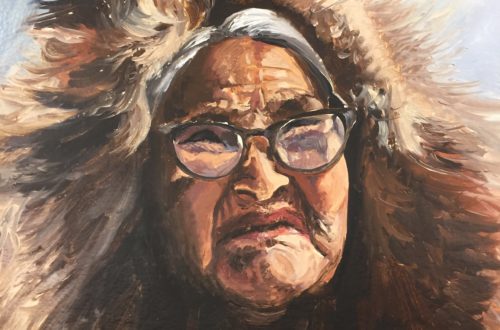
Happy Alaska (5/5)
-
Aurora borealis, or the northern lights, can be seen an average of 243 days a year in Fairbanks. The northern lights are produced by charged electrons and protons striking the earth’s upper atmosphere. I didn’t see even a flicker.
Due to the small population, Alaska is one of the cleanest places in the United States. Fresh air, waterfalls that you can drink from, and crystal clear lakes contribute to the state’s wilderness vibe and overall appeal. Alaska has eight National Parks; three more than the entire East Coast of the United States.
There are over 130 volcanoes and volcanic fields in Alaska, some of which still erupt to this day. Of these volcanoes, about 90 have been active within the last 10,000 years and might be expected to erupt again. More than 50 have been active since about 1760. The volcanoes in Alaska make up well over three-quarters of US volcanoes that have erupted in the last two hundred years. For the past 40 years, Alaska has averaged more than two eruptions per year.
Barrow, which is 800 miles south of the North Pole, has both the longest and shortest days. When the sun rises on May 10, it doesn’t set for three months. When it sets on November 18, Barrow residents don’t see the sun again for two months.
The highest temperature recorded in Alaska was 100 degrees Fahrenheit in Fort Yukon in 1915. The lowest Alaska temperature was −80 °F in Prospect Creek on January 23, 1971.
This beautiful state only becomes more serene when the snow falls. Over 300 inches a year blanket the landscape.
Of the 20 highest peaks in the United States, 17 are in Alaska. This includes Denali, which is the highest peak at 20,320 ft. above sea level.
Giant vegetables are common in Alaska due to the extremely long days in summer. Alaska has grown a record cabbage weighing 94 pounds.
Alaska has no plants poisonous to the touch. All other states have poison ivy and poison oak.
The nation’s two largest forests are located in Alaska. The Tongass in Southeast includes 16.8 million acres and Chugach in South central has 4.8 million acres.
Alaskan Kodiak and Polar Bears can grow to 1,400 pounds and 11 feet tall. Moose can grow to 1,350 pounds with antlers spanning up to six feet wide. While it’s legal to shoot bears in Alaska, waking a sleeping bear for the purpose of taking a photograph is prohibited.
Seafood is by far Alaska’s top export. The fishing and seafood industry is the state’s largest private industry employer. Alaska’s fishing fleet of 9,400 vessels would span nearly 71 miles if lined up from bow to stern. The largest salmon ever caught was at the Kenai River and weighed 97.5 pounds. Alaska’s fishing industry catches and processes enough seafood each year to feed every person on the planet one serving.
There are more than 3,000 rivers and three million lakes in Alaska. Alaska’s largest lake, Lake Iliamna, is roughly the size of Connecticut. Alaska has more coastline than the rest of the United States combined at more than 34,000 miles. At 20,171 square miles, Alaska has more inland water than any other state. Alaska is the only state to have coastlines on three different seas: the Arctic Ocean, the Pacific Ocean, and the Bering Sea.
More than half the world’s glaciers can be found Alaska. About 5% of Alaska is covered by the 1,000-plus glaciers.
The Permanent Fund Dividend (PFD) is a dividend paid to Alaska residents who have lived within the state for a full calendar year (January 1 – December 31), and intend to remain an Alaska resident indefinitely. The amount varies each year depending upon the fund’s earnings and performance, with 2019 being $2600. Consider that if the PFD is $2000 and a mother and father has five kids, their check is $14,000.
Alaska is the only state that doesn’t collect either state sales tax or an individual income tax. Social Security and pension payments aren’t taxed by the state.
The state sport of Alaska is dog mushing, which was once the primary mode of transportation. The Iditarod dog sledding race is the state’s largest sporting event. The farther you get from the “road system,” the more common it is to see dog mushers. People rely on their team of canines to help move freight and to travel between villages.
In Alaska, ice sculpting is a competitive sport. The World Ice Arts Championship in Fairbanks includes over 100 different competitors from around the world each year.
Alaska has the lowest population density in the nation with one person per square mile. If New York City had the same population density as Alaska, only 16 people would be living in Manhattan. About 52% of Alaskans are men, the highest percentage of any state.
Alaska accounts for 25 percent of the oil produced in the United States. Prudhoe Bay, on the northern Alaskan coast, is North America’s largest oil field. The Trans-Alaska Pipeline moves 88,000 barrels of oil per hour on an 800-mile journey to Valdez.
Here are some fun but miscellaneous facts. Alaskans use only seven numbers for their phone numbers throughout the entire state. Alaska is the only state name that you can type on one row of a keyboard. The Santa Claus House in North Pole, AK offers a special Christmas experience for the kid at heart.
Happy, Alaska is a former railroad station on the Alaska Railroad in Happy Creek valley, north of Fairbanks. Happy was a local name derived from Happy Creek, which is one of five or six creeks in Alaska by that name.
The positive aspects of Alaska also contribute to its beauty. Negative plus positive equals balanced Alaska.


You May Also Like

Buckland and Selawik, Alaska (3/5)
January 24, 2018
Noorvik, Alaska (2/5)
January 23, 2018
